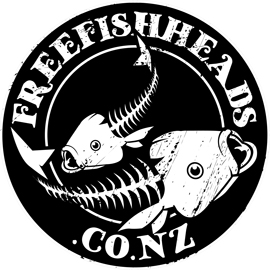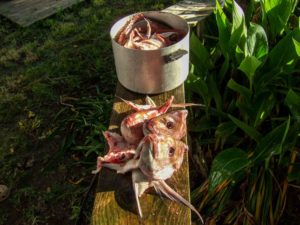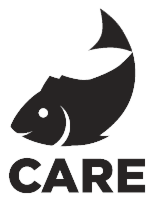Tip: Learning to kill and chill your fish quickly is the secret to obtaining the best quality fish.

A lot of good fish gets wasted. Snapper fillets are 30% of the total fish weight, that means 70% of the fish is wasted if the frame and head is thrown away.
If you don’t use the heads and frames give them to someone who will relish them. freefishheads.co.nz is a website with local contacts who would love to collect fish heads and frames from those who want to give them away.
It’s all about respect – make the most of our catch or give it to someone who will.

After removing the gills and guts, consider cooking methods that utilise the whole fish.
The backbone sometimes known as the ‘3rd fillet’ is often overlooked but can be dusted in flour and fried.

Methods for best utilisation include baking the fish whole (after removing the scales) and cutting larger fish like king fish into steaks. Steaming and boiling the head and frame is a good way to access all the edible flesh as is smoking whole so the flaps, head and frame can be picked clean, utilising the whole fish.
Click here for additional ways to utilise more of your catch.
Useful Links
- Learn how to iki different species of fish
- NZ Sport Fishing Council fisheries management submissions
- Fisheries management FAQ’s about issues that affect fishers
- Official fishing rules in your area for species, bag limits, size limits, seasons etc
- Release weights to maximise fish survival rates from barotrauma
- Information on fish processing and cleaning
- Smart fishing around seabirds
- Safe boating education with the Coast Guard
- Safety and boating regulations
- Free Fish Heads – Connect fishers who want to share their fresh fish heads and frames with people eager to receive them


